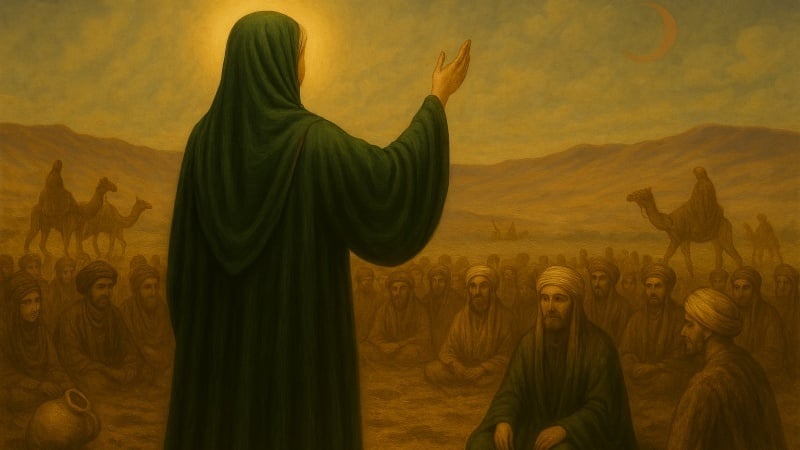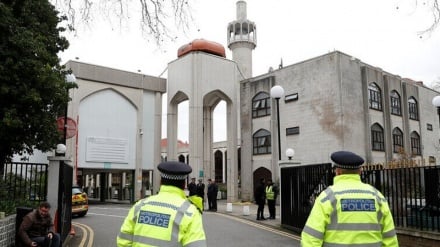What do you know about Lady Zainab, the granddaughter of the Prophet of Islam and enlightener of resistance?
-

What do you know about Lady Zainab, the granddaughter of the Prophet of Islam and enlightener of resistance?
Pars Today – Lady Zainab (peace be upon her), the honored granddaughter of the Prophet of Islam, is recognized as a model of patience and steadfastness.
She was the daughter of Lady Fatimah (the Prophet’s daughter) and Imam Ali (the Prophet’s cousin, successor, and guardian). Lady Zainab is one of the most prominent figures in Islamic history, known for her strong character and numerous sacrifices. She is celebrated as the standard-bearer of the Karbala uprising and the caretaker of the captives of Karbala. This Pars Today article takes a closer look at her life.
Birth
Lady Zainab was the first daughter of Imam Ali (pbuh) and Lady Fatimah (pbuh), and the sister of Imam Hassan and Imam Hussain (pbut). There is some disagreement regarding her date of birth: some sources cite the 5th of Jumada al-Awwal in the 5th year of the Islamic calendar (Hijri), while others mention the 6th year of Hijri, in Medina.
Naming
Lady Zainab’s name was given by the Prophet of Islam. It is said that the angel Gabriel conveyed this name to the Prophet from God. In the book Al-Khasais al-Zainabiyya, it is recorded that the Prophet kissed her and said: “Let those present inform my nation, and those absent be made aware, of the honor of this daughter of mine; indeed, she is like her grandmother Khadijah.”
The name Zainab linguistically means “a fragrant and pleasant-looking tree” and “adornment of the father.”
Titles
Many titles have been attributed to her. Some sources mention more than sixty titles, including Aqila Bani Hashim (the wise of the Hashim clan), Arifah (the knowledgeable), Muwathaqah (the trustworthy), Fadhilah (the virtuous), and Kamilah (the perfect). Lady Zainab is also known as Umm al-Masa’ib (Mother of Calamities) due to the many hardships she endured in her life. These include the death of her grandfather, the Prophet of Islam; the illness and martyrdom of her mother, Lady Fatimah; the martyrdom of her father, Imam Ali; the martyrdom of her brother, Imam Hassan; the martyrdom of Imam Hussain; the tragedy of Karbala; and her captivity in Kufa and Damascus.
Marriage
According to historical sources, despite having many suitors, Lady Zainab married her cousin Abdullah ibn Ja’far. Their marriage produced four sons and one daughter.
Accompanying Imam Hussain (pbuh) in the Battle of Karbala and her enlightening role afterwards
Many historians consider the Battle of Karbala as the most significant event in Lady Zainab’s life. She remained by Imam Hussain’s side until his martyrdom. After his martyrdom, she, along with other survivors, was taken captive and brought to Kufa and then Damascus.
Lady Zainab is recognized as the standard-bearer of the Karbala uprising due to her courageous stance against the enemies, her efforts to expose their actions, and her role in highlighting the status and oppression of the Ahl al-Bayt following the martyrdom of her brother, Imam Hussain (pbuh). Her sermons and enlightening speeches are regarded as the key to preserving the legacy of Ashura and awakening the people.
Mohammad Mohammadi Eshterhardi, an Iranian religious author, has outlined three main missions of Lady Zainab after Ashura: caring for the captives, protecting and supporting Imam Sajjad (the son of Imam Hussain), and conveying the message of the martyrs to the people.
Yazid’s court in Damascus
When the caravan of Karbala’s captives entered Yazid’s palace, an official assembly was held, composed of the dignitaries of Damascus and representatives of various religions. At Yazid’s command, the captives were brought into the assembly while all eyes were fixed upon them.
At this moment, Lady Zainab addressed Yazid, saying:
"Is it justice that you have hidden your wives and maids behind curtains, yet sent the daughters of the Messenger of God as captives, tearing apart the veils that protect their honor, exposing their faces, and parading them from city to city under the control of your enemies, so that people in towns, villages, fortresses, and deserts gaze upon them from near and far? Use all your schemes and efforts as you wish, but by God, you can never erase our memory, extinguish our revelation, or silence us… this shame and disgrace will never be removed from you."
The enlightening speeches of Lady Zainab are credited with shattering the triumphal joy of Ibn Ziyad, Yazid, and the Umayyads. It is said that as a result of her powerful enlightening, Yazid was compelled to apologize and express regret, placing the responsibility for Imam Hussain’s martyrdom on Ubaydullah ibn Ziyad.
Subsequently, Lady Zainab and the captives of Karbala requested Yazid that they hold mourning ceremonies for Imam Hussain in Damascus, and he agreed.
Patience and steadfastness
Lady Zainab is celebrated as a symbol and heroine of patience. Her resistance in defending the sanctity of religion, her self-control in the face of hardships, her courage against the enemy, and her avoidance of complaints before the public are all cited as key aspects of her patience.
On the Day of Ashura, upon seeing the bloodied body of her brother, Imam Hussain (pbuh), she prayed: “O Lord, accept this sacrifice and martyrdom in Your cause from us (the Prophet’s family).”
In response to Ibn Ziyad, who asked how she viewed God’s decree regarding her brother and the Ahl al-Bayt, she replied: “I saw nothing but beauty.”
The epic of Zainab
Ayatollah Khamenei, the Leader of the Islamic Revolution, has spoken about the character of Lady Zainab, the lady who illuminated the path of resistance:
"The epic of Lady Zainab (peace be upon her)… complements the epic of Ashura… The greatness of Lady Zainab’s work cannot be measured against other great events in history; it must be assessed in comparison with the event of Ashura itself. This magnificent human being, this great lady of Islam and humanity, was able to remain steadfast and upright in the face of an immense mountain of calamities… She stood tall like a proud summit both against the enemies and in the face of tragedies and bitter events; she became a lesson, a role model, a leader, and a pioneer."
Death and burial
Lady Zainab passed away on the 15th of Rajab in the year 62 AH and was buried in Damascus, Syria.


